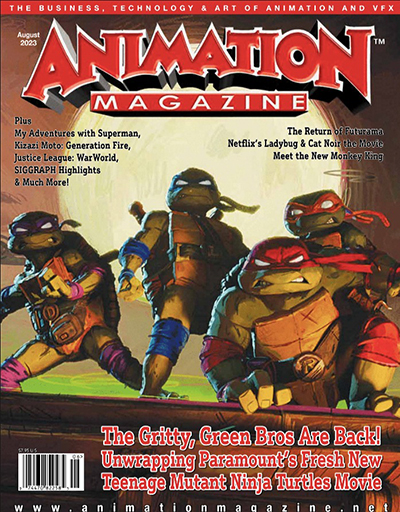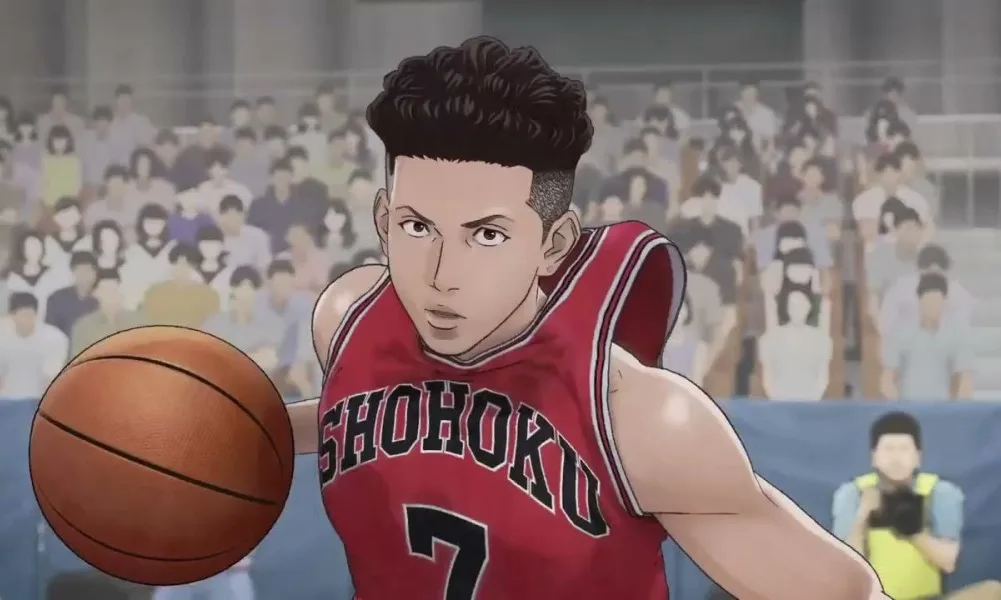|
Getting your Trinity Audio player ready...
|
“We didn’t decide what ‘First’ meant in the title,” says The First Slam Dunk producer Toshiyuki Matsui. “We wanted each audience member to decide that on their own.” Based on Takehiko Inoue’s beloved basketball manga, which has sold over 170 million books worldwide, the film was one of the biggest anime hits of 2022, earning more than $262 million worldwide.
Toei Animation producer Matsui spent years persuading Inoue to revisit Slam Dunk after a long hiatus. The Slam Dunk TV series ran from 1993 to 1996; Howling Basketman Spirit, the last of four short features, was released in 1995. In an interview conducted via email, Matsui recalls, “We first approached Inoue-san about a film adaptation back in 2003; we made short presentation videos. In 2014 he gave us the greenlight after seeing the level of passion and technology we could offer.”
Inoue was initially unsure what the focus of the new film’s story would be. Inspiration came from a title he saw in a bookstore about “the leader inside you.” “I didn’t read the book,” he noted in an interview published in Japan, “But the title awoke some dormant ideas: I wanted each character to advance and grow by persevering through hardship. I was able to draw on my own experiences of pain and hardship for the story. Reviewing the Slam Dunk manga, I realized there were ideas I hadn’t touched on. I wanted to shed light on characters who are weak but moving forward despite their weaknesses, surmounting the obstacles in their pain: It became the theme of the movie, which I had been unable to put into the previous work.”
Back to High School Games
Further inspiration came from watching an Okinawan high school basketball team composed of “shorter, more agile athletes.” As a boy in Okinawa, Inoue’s Ryota Miyagi learned basketball from his adored older brother. When his brother was killed in a boating accident, Miyagi worked to become a star point guard. But he struggled to overcome his troubled relationship with his mother, whom he believed preferred his brother — and his short stature. Miyagi is only 5’6″; the other starters on the team range from 6’ to 6’5”. Inoue recounts Miyagi’s journey in a series of flashbacks during the game between champion Sannoh High and the scrappy underdogs of Shohoku High that ends Slam Dunk.
Inoue’s involvement in the earlier adaptations of his work was limited. He directed The First Slam Dunk, but cautions, “The extent of my position wasn’t clear when I agreed to work on the movie. I felt I had a responsibility to Slam Dunk and to its fans. I was involved in the writing process. I was there for the mocap, the voice recordings, and the music. I have a bad habit of sticking my nose into everything. The position of director came to me much later in the process. When we were working on the movie I was always called ‘producer’ out of convenience; even now, when people call me ‘director’ I don’t realize they’re addressing me!”

Takahiko Inoue ranks among the most polished draftsmen working today in manga or animation. Few artists can match his ability to capture vivid expressions and dynamic poses in a few deft lines. Character designer Yasuyuki Ebara worked closely with Inoue on the models and to ensure every drawing was on model.
Matsui says, “It’s extremely hard to capture the essence of Inoue-san’s drawings and turn them into animated characters: Only a few people can do that in the animation industry. Ebara-san took a very important role, and director Inoue did some drawing as well. ‘Can we make Inoue-san’s manga move in animation?’ was our number one challenge.”

During production, Inoue made a key discovery: “The differences between manga and anime became clear to me. I can control how the audience reads a manga: The size of a panel will determine how long their eyes will stay on that panel. But I cannot stop time in a movie. My instinct is to draw every frame with as much detail and nuance as a manga page, but all that detail passes by in an instant.”
To ensure the characters moved believably, Matsui shot motion-capture footage of basketball players for the artists at Toei and DandeLion Animation Sudio. Inoue says, “The need to animate realistic basketball movements was not a hope, but a duty I had to my audience. We shot mocap footage to get a realistic representation of basketball, then superimposed the character models onto the mocap figures.”
All the Right Moves
“Some movements needed to be exaggerated while others needed to be toned down,” he continues. “Capturing the way the body balances and rights itself when a player lands from a jump, how the legs bend, when they start and stop moving all had to be accurately represented. In terms of drawings, it’s millimeter increments; in terms of time, it’s fractions of a second. The sense of realness lives in the narrow boundaries of those millimeters and tenths of seconds.”
The First Slam Dunk was both a critical and box office success: It won the Japan Academy Prize for Animation of the Year and ranks as the fifth highest-grossing anime feature of all time. Reflecting on that success, Matsui comments, “I’m really happy the movie has been seen by people around the world. One thing that surprised me was how much of the audience hadn’t been born when the original series aired on TV. The film also had a big female audience, which the original series didn’t have.”
When questions arise about the possibility of a second Slam Dunk feature, he concludes, “We don’t have plans for one now. We did everything to make this movie enjoyable for both existing fans and first-time viewers. But I’m glad people are looking forward to a possible sequel: It’s a pure joy to hear that question.”
GKIDS will release The Last Slam Dunk in select theaters on Friday, July 28. Participating theaters and online ticketing available at slamdunkmovie.com.
— Written by Charles Solomon & Ken Endo.














